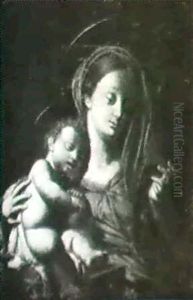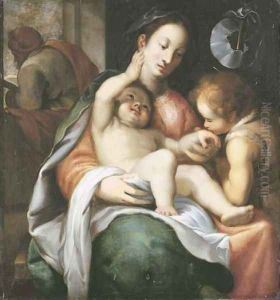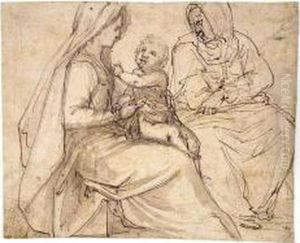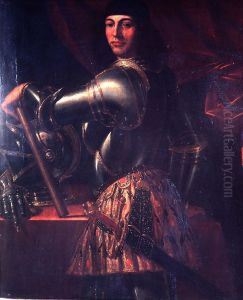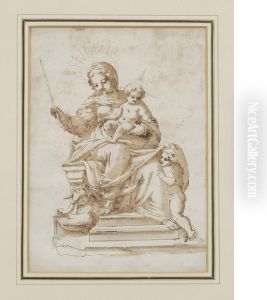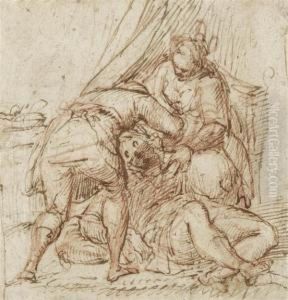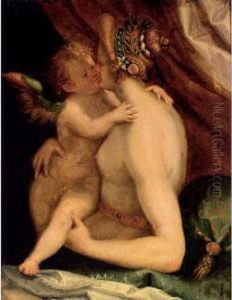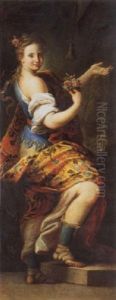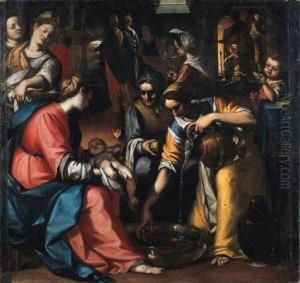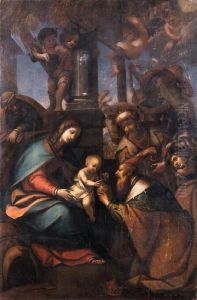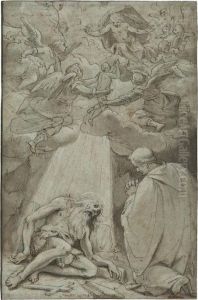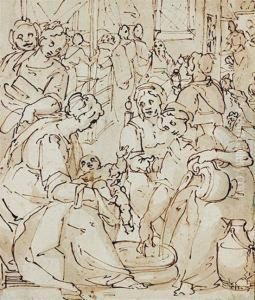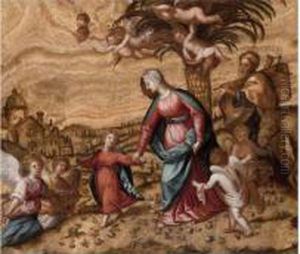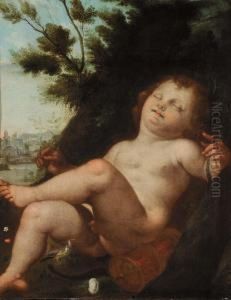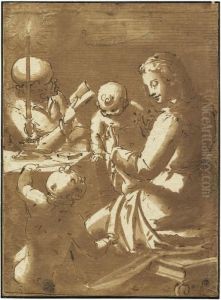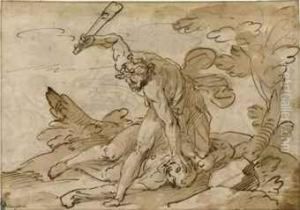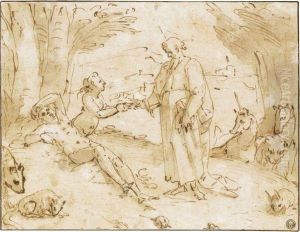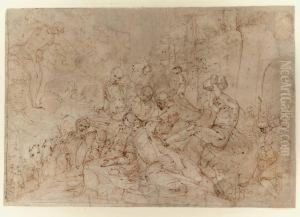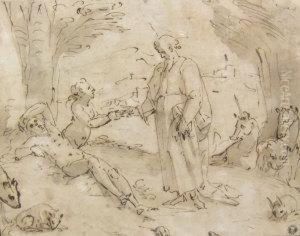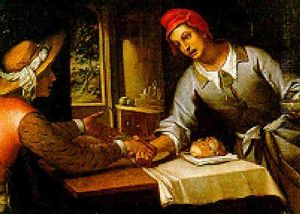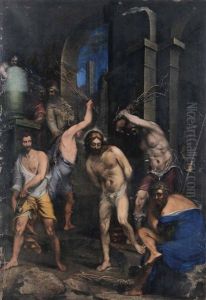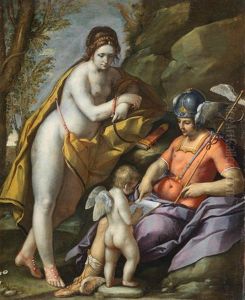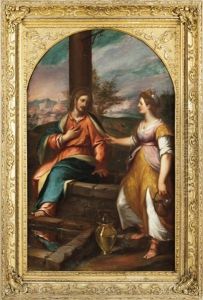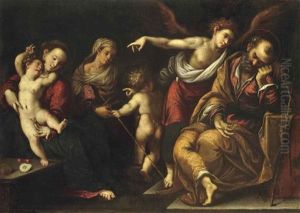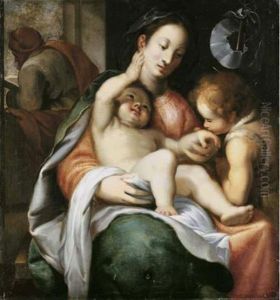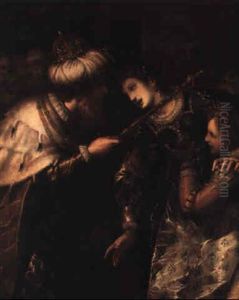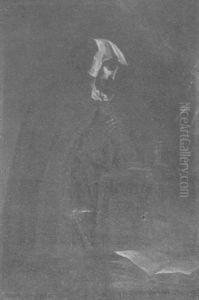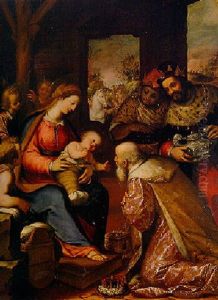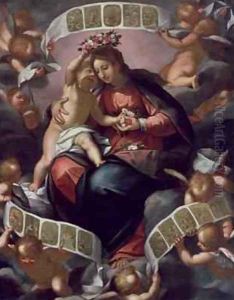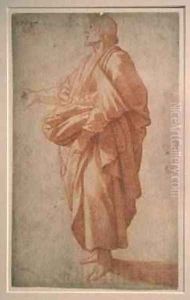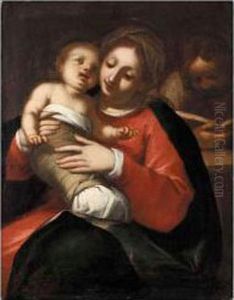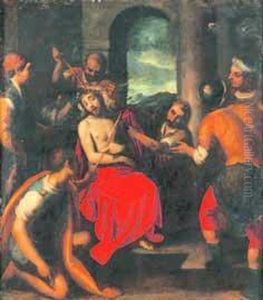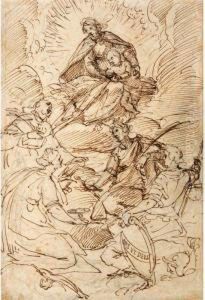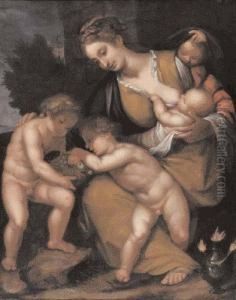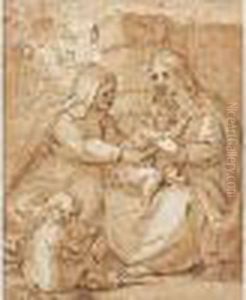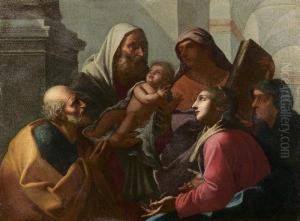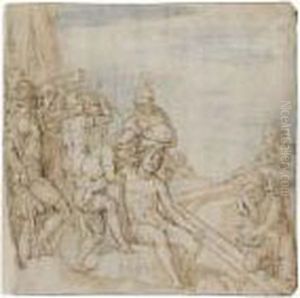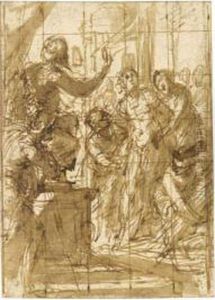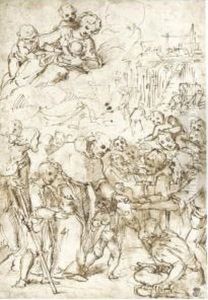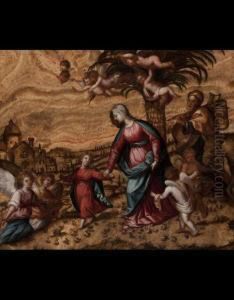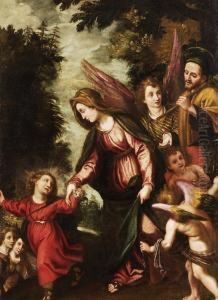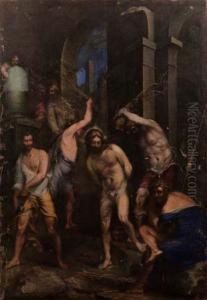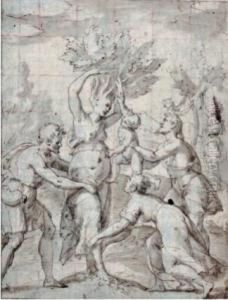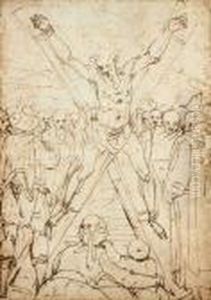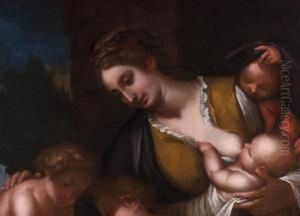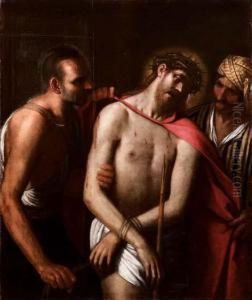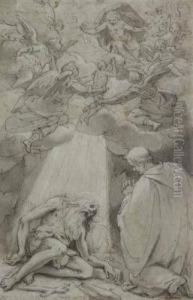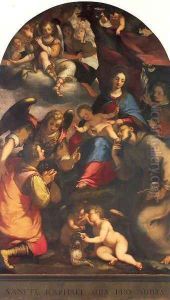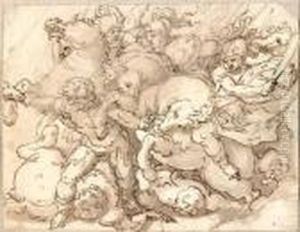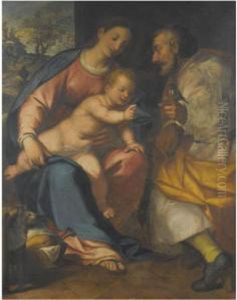Giovanni Battista Paggi Paintings
Giovanni Battista Paggi was an Italian painter of the late-Renaissance period, born in 1554 in Genoa. He initially trained with Luca Cambiaso, a prominent Ligurian painter of the time, but following a violent incident, Paggi fled to Florence to escape prosecution. There, he became a part of the Florentine artistic environment and was influenced by the Mannerist style.
In Florence, Paggi was exposed to the works of artists such as Giorgio Vasari and came under the patronage of the influential Medici family. His style evolved under these influences, and he became known for his vivid colors and dynamic compositions, which often included elongated figures typical of Mannerism.
Later, Paggi returned to Genoa, where he played a significant role in introducing and spreading the Baroque style, which was emerging in Rome and other parts of Italy. He opened a workshop that became a hub for young artists, and he became a leading figure in the Genoese art scene. Paggi's works from this period show a clear transition from the Mannerist style to an early Baroque sensibility, with more naturalistic figures and a greater emphasis on light.
Giovanni Battista Paggi's contributions to Italian art were significant in bridging the stylistic gap between the late Renaissance and the early Baroque. His paintings are characterized by their refined technique, expressive use of color, and a blend of dynamism and clarity. Paggi's legacy is also found in his influence on other artists, particularly in Genoa, where his teaching and artistic direction shaped the future of Genoese painting. He died in 1627 in Genoa, leaving behind a body of work that is appreciated for its historical and artistic value.
